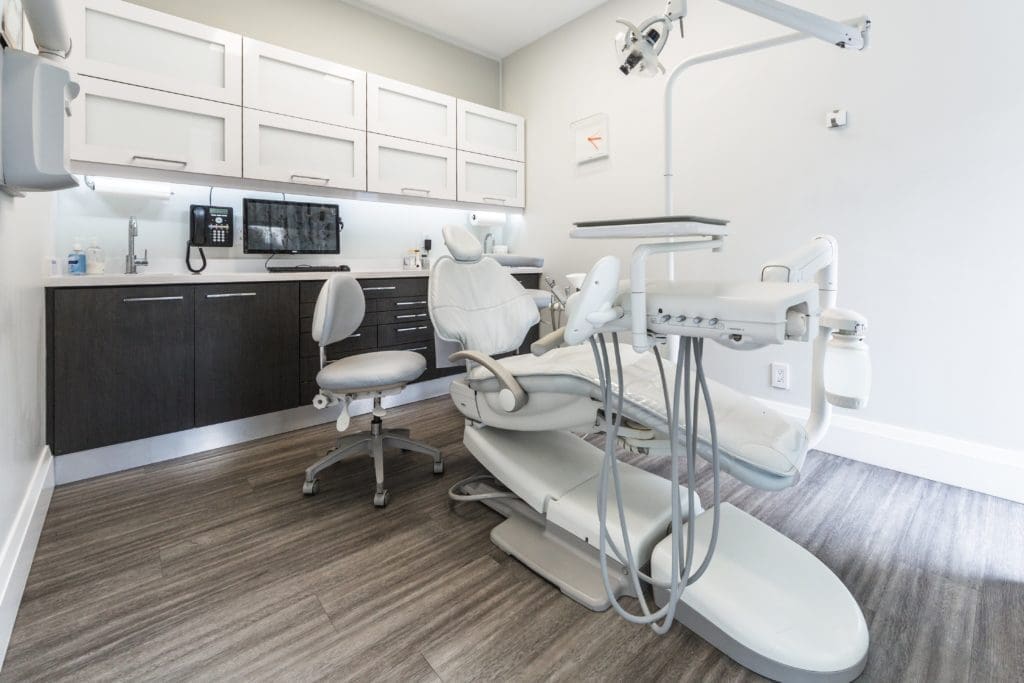Last updated on October 4th, 2023 at 03:57 pm
This blog is part 3 of 3 in a series on opening additional locations. Click here for Part I, and here for Part II in this series.
 Multiple locations can be a blessing or a curse. Much of how you feel about office #2 (and beyond) rests upon how you set things up from the start.
Multiple locations can be a blessing or a curse. Much of how you feel about office #2 (and beyond) rests upon how you set things up from the start.
In this series, we’ve covered a number basic “do’s & don’ts” for you to consider when opening additional offices. This information is targeted primarily at GPs who are looking at additional locations – not specialists. While some of this information would be helpful for specialists, there are a few different rules that apply to them with multiple offices.
If you are a specialist and you find that you have questions that haven’t been answered in these blogs, e-mail me at jeffb@mgeonline.com or call me here at MGE at (727) 530-4277. The same goes for anyone else who reads these – feel free to contact me with questions.
Eight key questions to ask before expanding:
I began this series by listing out eight questions that I would ask (not necessarily in sequence) a client if they were looking at an additional location.
The questions are:
- Why are they opening another office?
- Is their “house in order” at their current location?
- Where are they looking at opening the second (or third, fourth, etc.) office?
- Are they going to work in the new location? If so, how many days and how will this affect their primary location?
- Are they bringing in a partner in this venture or are they going it alone?
- Are they starting a scratch practice or buying an existing office?
- How are they going to staff the new office?
- How will they administer the finances for each office?
I broke down questions 1-3 in the first blog. In the last issue, we hit on numbers 4 and 5. As this is the last issue, we’ll wrap up with questions 6-8.
Assuming we’ve ironed things out regarding 1-5 above, the next thing I’d look at is:
6. Are they looking at buying an existing office or starting an office from scratch?
I ask this question for three reasons: a) To make sure the doctor is walking into a positive situation, b) To see how the new office (depending on level of productivity) will impact office #1 and c) out of pure curiosity.
You can be wildly successful taking either route (scratch or existing).
In my opinion, your viewpoint toward office #2 is simple: If you’re looking at an additional location and your first location is successful (which should be a prerequisite for opening #2 anyway), you’ve most likely learned quite a bit. If you knew what you know now when you opened your first office, there would probably be a number of things you would have done differently.
Related: Is Your Dental Office Location a Problem?
So, use that knowledge when you open office #2.
I personally would ensure that office #2 fit my definition of “ideal.” Why do otherwise? You already have a successful practice – you shouldn’t have to compromise with what you want for office #2. Find the right location. Maybe there’s an existing office there for sale, maybe there isn’t. Equip it the way you want without going overboard and placing a gun to your head with an unmanageable overhead. You may be leasing at your first location and want to buy the building for location #2. Sometimes you’ll find an unbelievable opportunity that falls right in your lap that’s exactly what you’re looking for.
Once you’ve established what you want you would have to work it against the numbers – meaning you would want to determine a) if the price and any financing you would get is manageable and b) how projected revenues and time worked at office #2 would impact office #1’s productivity and finance (along with your personal finances). We spent a bit of time on this point (finance) in the last blog:
7. How are you going to staff the new office?
If you’re opening from scratch, this isn’t too difficult to figure out. Again though, take what you’ve learned from office #1, including policies and procedures you’ve developed over the years. Ideally, your first employee would be a potential long-term office manager candidate that can grow with the office. It’s not uncommon for an MGE client who is looking at a second office to do one of the following, months prior to opening:
a) Train an existing employee at location #1, with office manager potential and who wants to advance on the MGE Office Manager Training Package. This obviously assumes you have a functional office manager at location #1 already in place. And please, if you’re going to move your current office manager from location 1 into location 2, you MUST make sure they are adequately replaced. As we covered in the first blog, you don’t want to disrupt office 1 for office 2.
b) If no candidate for the office manager at the new office is currently on staff, go out and hire a new one, train them and have them work in location 1 until location 2 opens. This offers a number of advantages from just hiring someone cold for office 2, not the least of which they get to see “how it’s done” in office 1, which is already a successful office.
If you’re buying an existing office, with a staff already in place, this becomes a more complex issue. I’ve seen this go both ways – i.e. I’ve seen plenty of instances where the transition was smooth and the staff worked out quite well for the new doctor to cases where the new doctor dismissed most if not all of them.
A few things you might want to look at prior to purchase:
Discuss the staff with the doctor you’re buying from and get an honest assessment for each and every employee.
You may also want to review any personnel files, salary history and overall production statistics. With employees, everything should be performance-based. While they may not keep statistics, you can try a couple of things to figure them out. For instance, you could look at overall practice production and note where various staff were hired and examine the impact. If job descriptions are more specific, possibly examine productivity from their individual areas – i.e. for collections; look at the percentage since they’ve been on the job and so on.
Observe the office in action if possible.
See how patients are handled. Is that how you would want it done in your office? If there’s a problem, how hard would it be to correct?
Ensure salaries are in line with basic overhead percentages.
We did a series of five blogs on this called Managing Overhead and Profitability and they can be found in our blog archives. In Managing Your Overhead and Profitability we cover basic overhead percentages. For ALL staff, back and front, excluding the doctor and associates (but including hygienists), salaries including attendant taxes shouldn’t exceed 22.5%. You might find that salaries in this office you’re looking to buy are 30-40%, which may not be a problem for the current owner, but will probably be one for you, especially with the debt you’ll have to service with the new office.
Consider how successful the office is.
Is your office very productive compared to other offices? Well, the staff there contributed to that. The better the situation, the less change you’re going to want to introduce. It’s human nature to want to “put your mark on something” or change everything when you take over a new job or scene. Unfortunately, it’s not always the best idea. I’ve had new practitioners taking over successful offices change little to nothing in the office initially. And why would they? It was working. Slowly but surely they got to know the patients and made improvements. Now, obviously if you see any gross errors clinically or any legal issues – you’d change these as a matter of course and FAST. But for the most part if it’s a working scene, ease into it and change little.
You’re not really going to know the staff – for real – until you work with them.
And regardless of any “glowing” recommendations from the doctor you bought from, you’ve not worked with these people. So, start out and see what happens. You might want to apply whatever you’re using for performance criteria in office #1 to determine your next move.
There are different ways to set up the purchase of an office with regards to staff, so you should consult your employment attorney with any questions you may have.
And this brings us to our last question:
8. How will they administer the finances for each office?
In most cases a second office is a separate corporation and should be treated as such – separate checkbooks, overhead calculations, etc. In many cases, I don’t see these separated out. You end up with a mish-mash back and forth that an accountant has to swim through at the end of the year because one practice was floating the other or taking care of some of the other’s expenses.
I say this for one simple reason: Every business needs to be able to stand on its own and be profitable. Mixing up the finances obscures this fact. It can give you the wrong idea of one or both.
How you go about doing this is best established by your lawyer and accountant. But for the sake of simplicity, you’ll probably be best served keeping each office as separate as possible.
An intriguing aspect of multiple offices that I don’t see discussed very much is the idea of centralizing some of the functions. While each office should be its own separate entity and financially viable, this does not preclude you from eliminating what would be duplicative jobs or activities and putting it all in one place. Again, how you could do this corporately would be something to discuss with your attorney or accountant. But I’ve seen it done very successfully.
Things that are easy to “centralize” are Marketing & PR, bookkeeping/accounting, ordering and supplies and staff training.
For example, if you have four offices, you might have one central location for training new staff as opposed to having a person at each office responsible for it and so on.
More offices can also create more favorable purchasing situations via volume discounts on marketing for instance. Obviously, the need for all of this would depend on how many offices you have and their overall volume.
In closing.
That about wraps up the subject. If you’ve managed to get through all three of these without an inordinate amount of caffeine – I applaud you (I’ve never been short on words…). If I missed some points or you have more specific questions, please feel free to contact me via email jeffb@mgeonline.com or call our office.
In the face of all of the advice in the world, you ultimately, have to do what you think is right as you will be the one responsible for whatever actions you take. With that in mind though, I hope that this information has served up some “food for thought” to make your experience with additional offices pleasant, profitable and more successful.
This article provided by MGE: Management Experts, Inc. consists of suggestions and ideas that could be used to help improve the solvency and viability of a dental practice. There is no guarantee that the information provided is appropriate to your practice. Each practice, their owners, officers and staff are individually responsible for ensuring that any system implemented in the practice complies with the applicable federal, state and local accounting, tax and employment laws, rules and regulations governing the place in which your practice is located. These suggestions do NOT constitute legal or accounting advice. You should seek advice from your own accounting and legal advisors as to what is appropriate to implement in your practice, prior to implementation. MGE: Management Experts, Inc., its officers, directors, shareholders, employees, agents and the writer of this article, are not responsible for any claims, real or otherwise, associated with this material and information or any part thereof.


